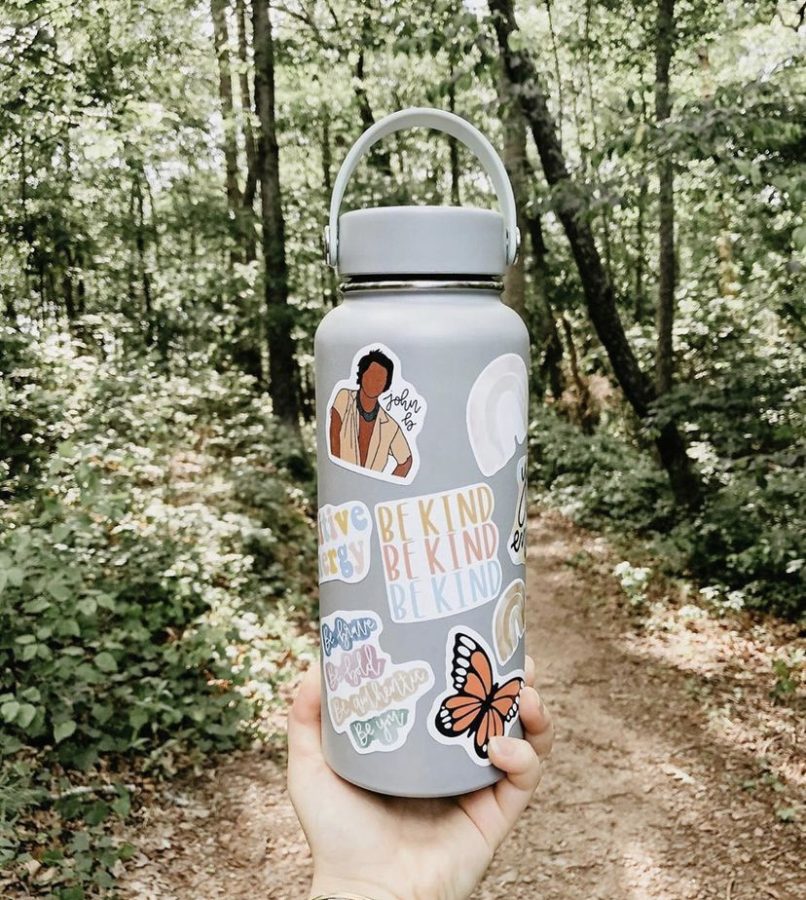A battle for the environment, plastic vs disposable
I hear a number of arguments in the debate between which is truly better: reusable or disposable water bottles.
Each holds their own pros and cons. It just depends on what you are looking for. Is the decision based on price, practicality, the preservation of the environment? All are important, yes, but one in particular though—in my opinion—is most important.
In order to conclude this controversy of sorts, I’m taking it upon myself to conduct some research, searching for solely facts. Let’s see which has a more detrimental effect on the earth, and is more economically conscious.
A stainless steel water bottle should last about ten to twelve years. This is my choice when presented a water bottle. I prefer these over a reusable plastic bottle because it lasts longer, keeps water cool, and in my experience, tends to spill and leak less. While the look of a clear plastic water bottle may be more appealing to cover in stickers, I do not like room temperature water and always choose stainless steel.
The human body should intake 64 ounces of water a day. That’s about four plastic water bottles daily. If you are meeting the suggested amount by disposable bottles, you will probably find yourself spending $1,460 a year.
Now, if you’re buying a twenty-four-pack case of water from Walmart, you might find spending $2.92 on this is more than reasonable, but to supply your water for the year, you would be spending around $177 annually.
Now, I understand you may be drinking from cups, or lacking in your daily water intake and this number may not be completely accurate. But, are you buying the two dollar water from Walmart? Or, are you spending $22.54 on Fiji water? If so, you may be spending more than one $1,300 annually. All for what? Water?
You can find many stainless steel water bottles ranging in the twenties or thirties of dollars, so it seems rather unreasonable to spend thousands on water, especially when you have better resources at your disposal.
Understanding that certain communities have a lack of clean water accessibility, I know bottled water must be necessary for some situations. However, schools participating in the National Free Lunch Program are required to provide free drinking water. Out of the 130,930 schools in America, as of 2020, nearly 100,000 participate in the program. And yes, there is some discrepancy between these two numbers, however, a major percentage favors the accessibility to water.
If a water bill is the cost in question, its amount seems near miniscule to its competition. At about 10 to 25 cents a gallon. So about every two days, you spend about this much just from a tap or even a tabletop filter.
If economically I cannot shed an ounce of light onto which is more practical, let’s look into the environmental side of the argument.
When I first read the fact I am about to share, I thought I must have read something wrong. I re-read it about three times and made no mistake, but unfortunately, it’s true. Sixty million plastic bottles end up in landfills every single day.
To make the bottles that in many occasions end up in our oceans, the oil used to create them yearly is more than 15 million barrels. To put that into perspective, that’s the fuel of 100,000 cars for a year.
“Well, I recycle,” seems to be the excuse for many. When about seventeen percent of these bottles are making it to the recycling bin, I question the truth in many of these claims.
In a world that has evolved everyday situations into one that requires a single-use plastic of some sort, why would you not convert to this much cheaper alternative for disposable water bottles?

Gigi is beginning her second year of writing for The Central Trend as a junior this year, and she is starting to fear she will run out of things to say....




























































































Man CIng • May 16, 2022 at 7:43 am
Love reading your editorial Gigi!:)